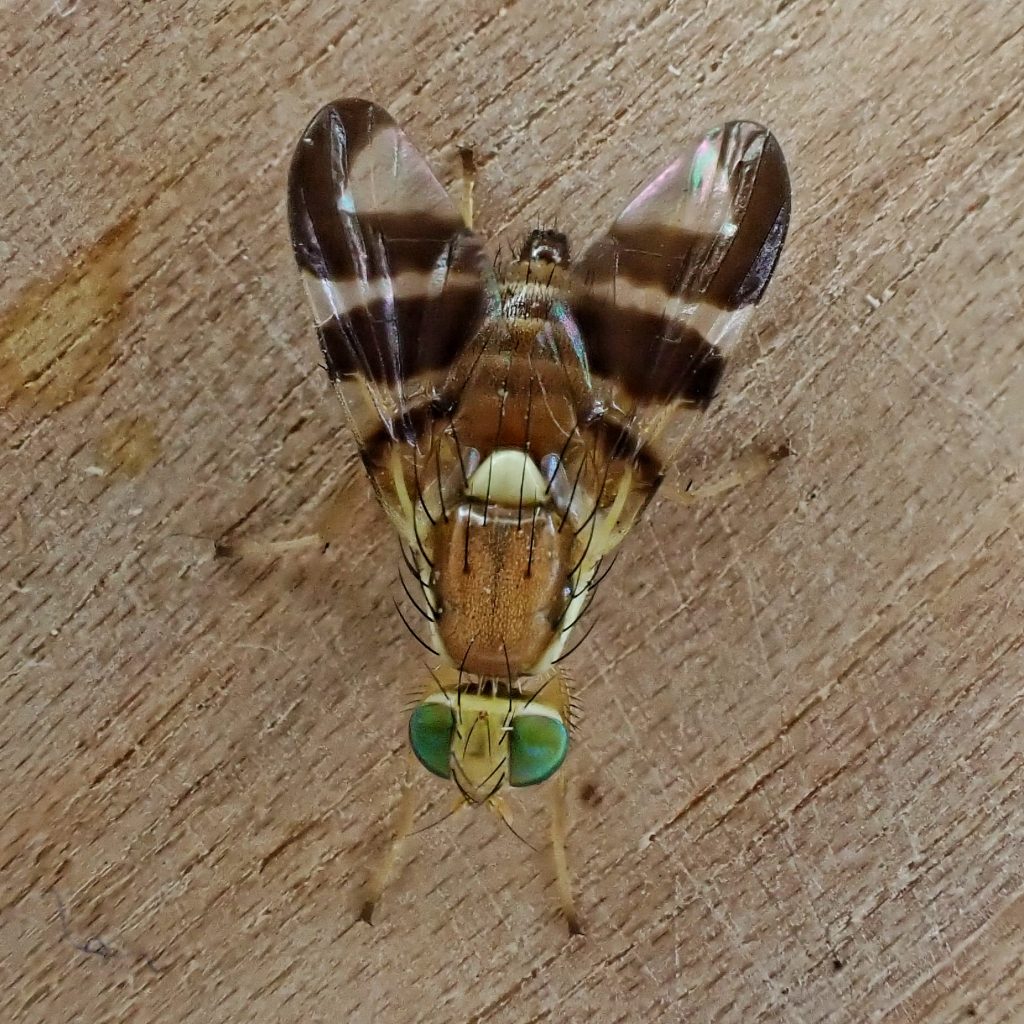
This is a striking and colorful member of the family Tephritidae, the true fruit flies, as opposed to the tiny flies of Drosophilidae (famous for their short life spans and multigenerational reproductive cycles that make them ideal subjects for studying genetics and mutation), which are commonly called fruit flies, but whose more accepted common name is vinegar flies. Like the other members of the genus Rhagoletis, R. completa is a jumping spider (Salticidae) mimic, the patterns on the wings seeming to imitate the way jumping spiders hold their front legs.
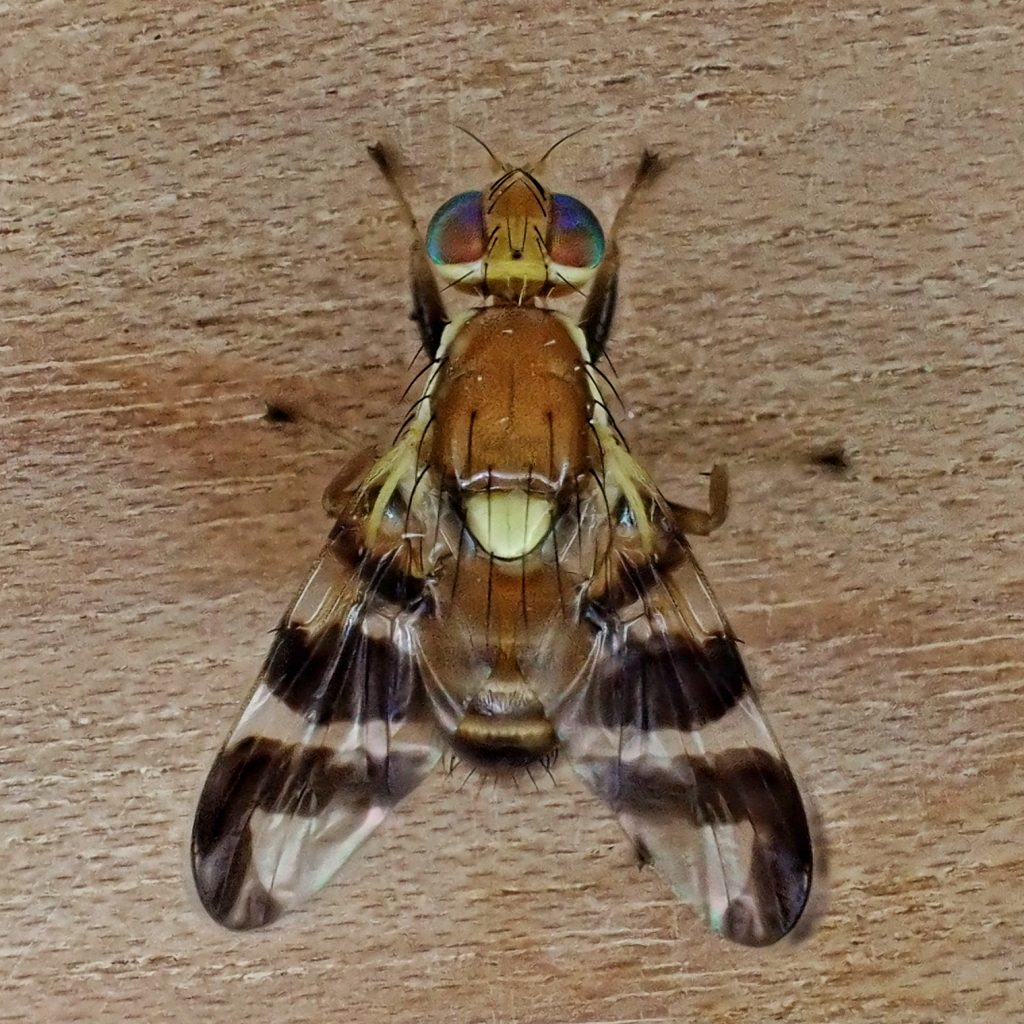
Like many members of Tephritidae, Rhagoletis completa is considered to be an agricultural pest. But they are of less economic import than many of their cousins. This is because most of the damage they do is cosmetic, and they seldom attack the ‘nut meat’ of the walnuts they infest. Instead they only feed on the husk which leaves stains on the nut shell, and that lowers their value commercially, though it doesn’t actually affect whether they are still edible and palatable. It can cause the hull to stick to the shell, making processing more difficult. And early season infestation can cause enough damage to the hull (husk), which is actually the sepals of the flower protectively enveloping the endocarp (shell) that surrounds the seed (nut meat), to disrupt the development of the endocarp and allow mold to attack and shrivel the seed.
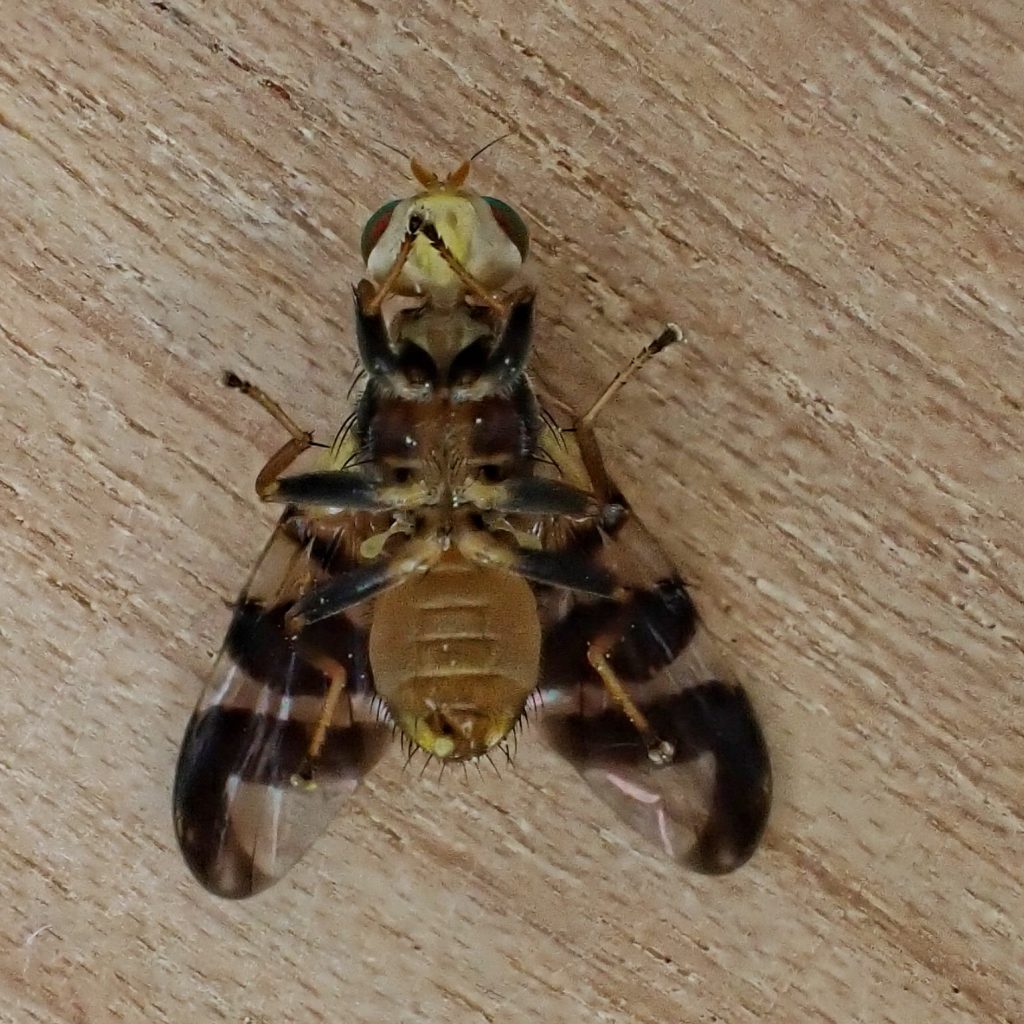
Rhagoletis completa is native to eastern North America, where it historically fed on the native walnuts Juglans nigra (black walnuts) and J. cinerea (butternuts). But during the settling of the west the pioneers brought with them the walnuts they had grown to cherish, and the Walnut Husk Fly (not to be confused with Rhagoletis suavis, the Walnut Husk Maggot, which has so far mostly remained in the East, and with which R. completa was long thought to be conspecific) came with them. Which in turn exposed the native western walnuts, as well as the burgeoning orchards of Juglans regia (English Walnuts), so that now this fruit fly has the run of the continent. This is the first Washington state record for this species on BugGuide, but it is undoubtedly more common than that would indicate. It has also been accidentally introduced in Eurasian and has spread rapidly there.
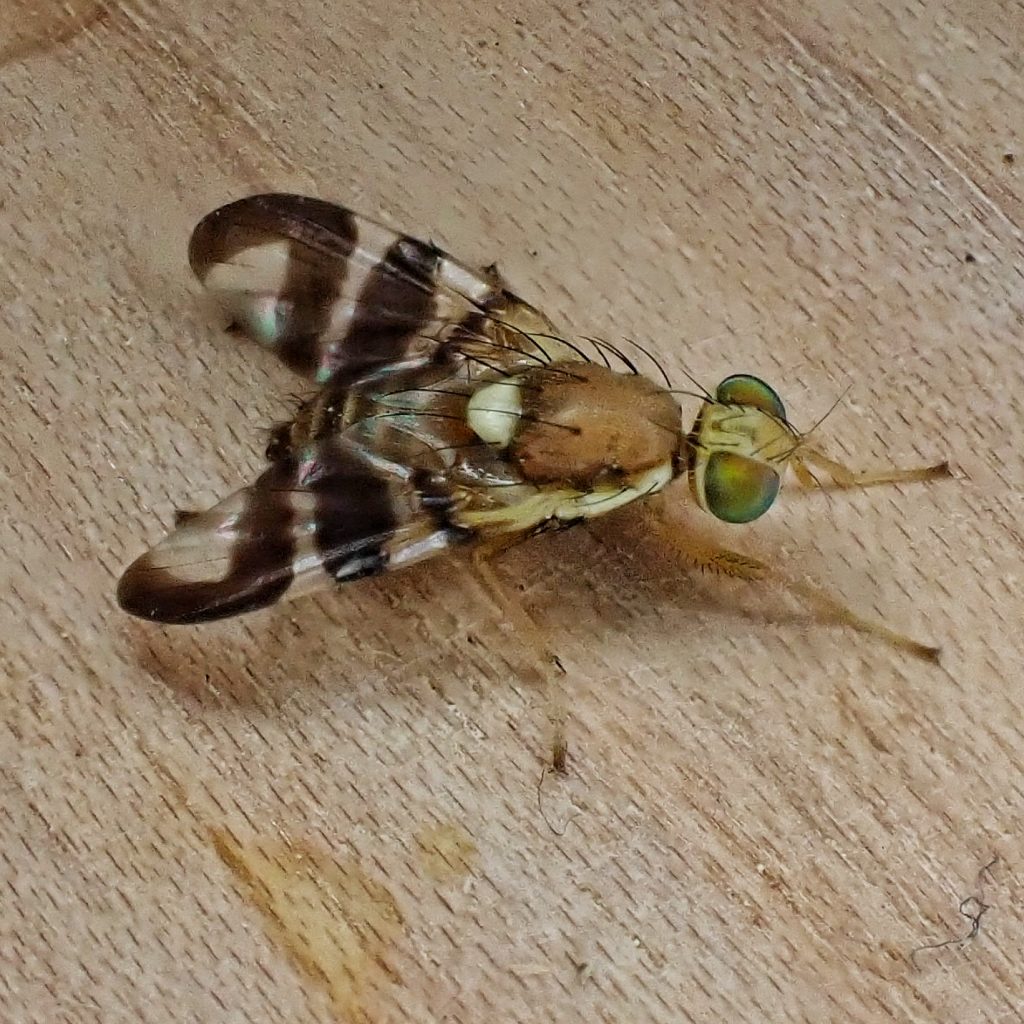
Description-Small (5-7mm) fly, with red thorax, red banded abdomen, green eyes, cream to yellow scutellum, and banded wings; v-shaped black band near wing apex which is separate from a transverse medial black band, and a narrower black band near the wing base.
Similar species–R. suavis has the distal V-marking on the wing joined to the medial band, and is found primarily in the east; other Rhagoletis have black thorax/abdomen, and/or thinner or more complex wing markings.
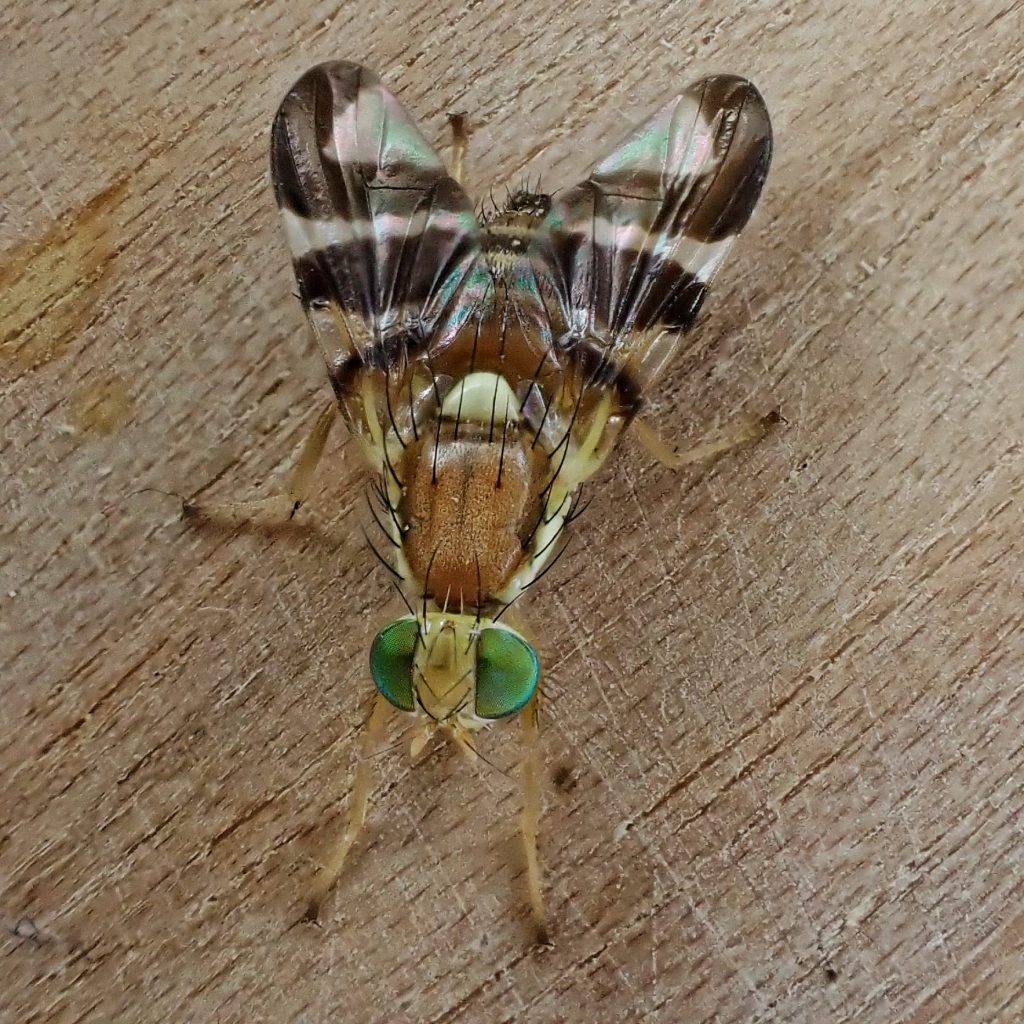
Habitat-Wherever there are walnut trees.
Range-North America and Eurasia; probably region wide in appropriate habitat.
Eats– Larvae feed on walnut husk tissues; may also utilize peaches and other fruits in the absence of walnuts; adults feed on honeydew, yeasts and leaf exudates
Eaten by-Larvae are hosts to the chalcidoid wasps Tetrastichus giffardianus and Spalangia nigra, the braconid wasp Biosteres sublaevis, the diapriid wasp Coptera occidentalis, and a eucoilid wasp in the genus Trybliographa; larvae and adults preyed upon by insectivores of all classes.
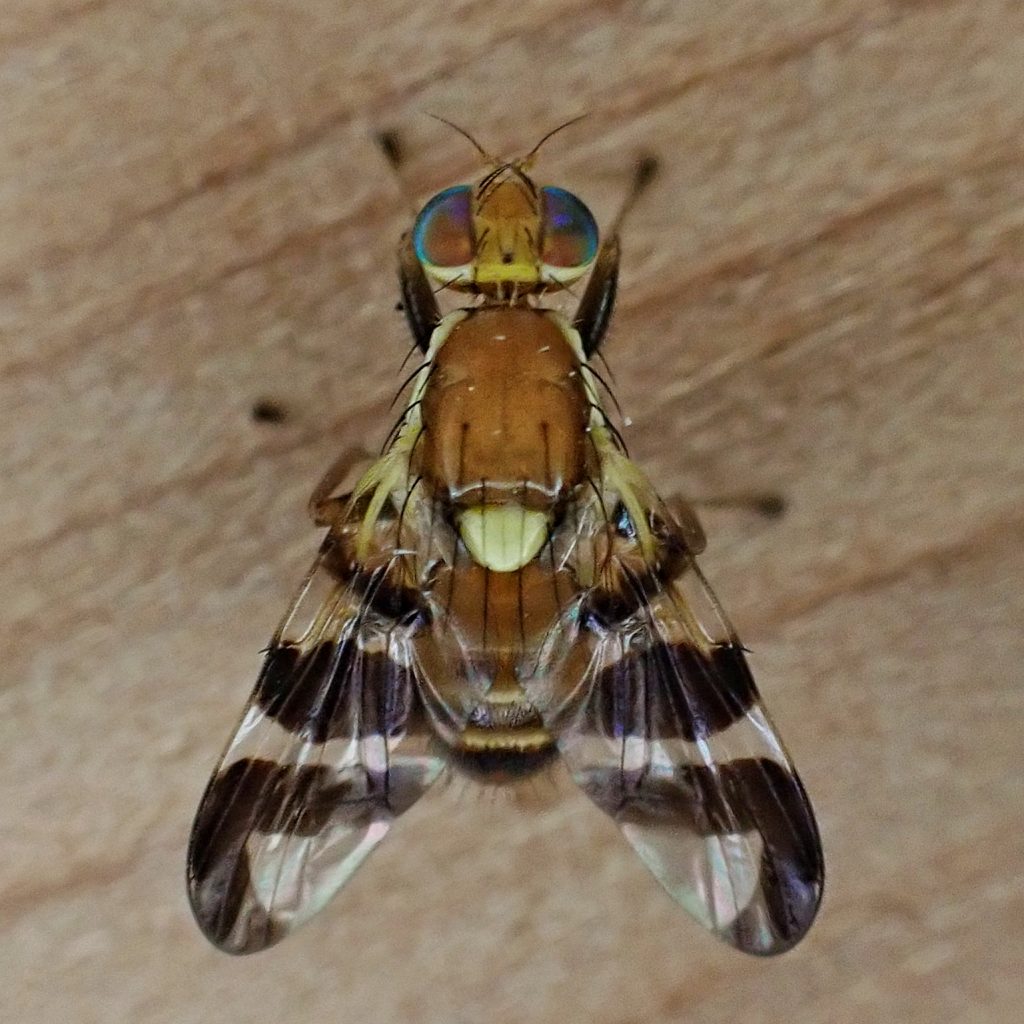
Reproduction-Univoltine; mating occurs roughly a week after adult emergence; ovipositing occurs starting 1-2 weeks later, and may be spread out over a month; about 15 eggs are deposited within each walnut husk, and up to 400 may be laid in a lifetime; eggs hatch in 5-10 days, and larval development takes 3-5 weeks; mature larvae burrow into the soil to pupate; overwinters as pupa; adults live up to 40 days.
Adults active-July through August
Etymology of names–Rhagoletis is probably from the Greek words for ‘spider hiding’, referring to the fact that these flies mimic jumping spiders. The specific epithet completa is probably from the Latin for ‘complete’, but I cannot ascertain what that references.
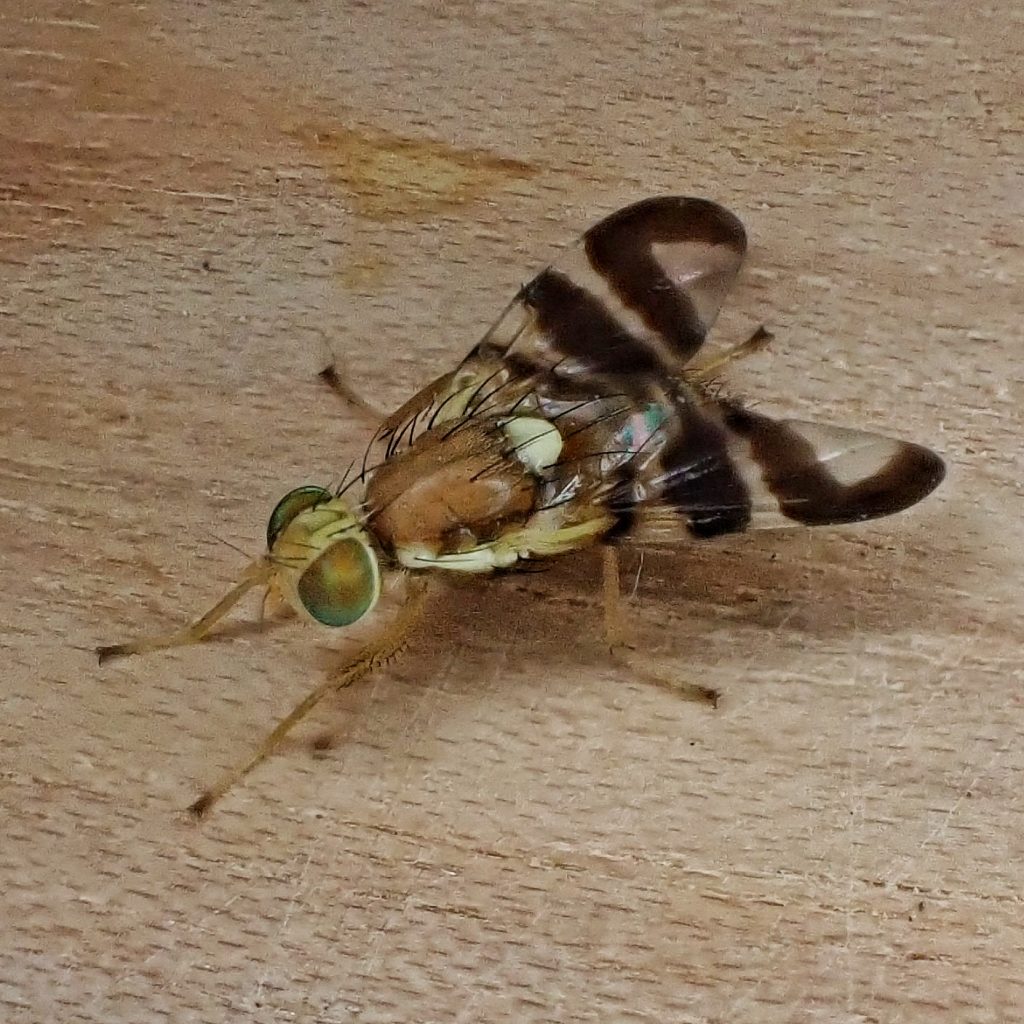
https://bugguide.net/node/view/92632
Walnut Husk Fly Management Guidelines–UC IPM
https://www.cabi.org/isc/datasheet/47053
https://www.tandfonline.com/doi/pdf/10.1080/00379271.2006.10700628?needAccess=true
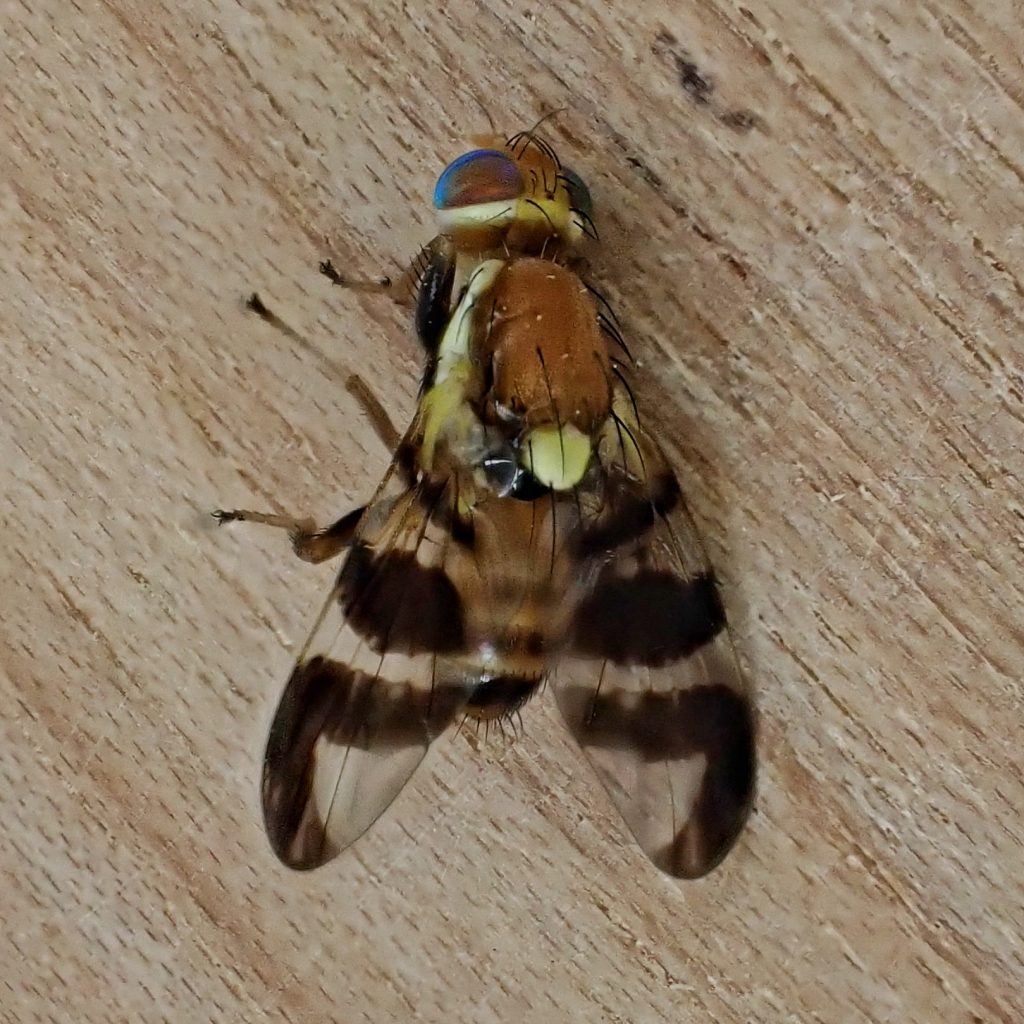
When we talked earlier I forgot to mention that I found what appears to be a Rhagoletis spp. at Beaver Pond Road. I’ll put it under the scope this weekend.
Thanks for this very interesting profile & great pictures! ☺️